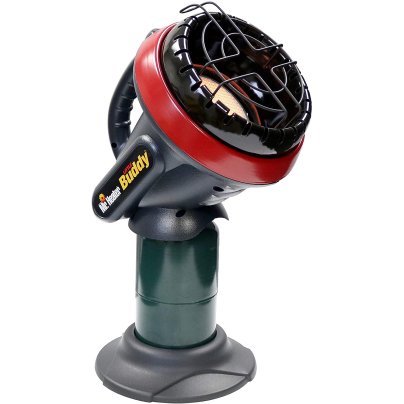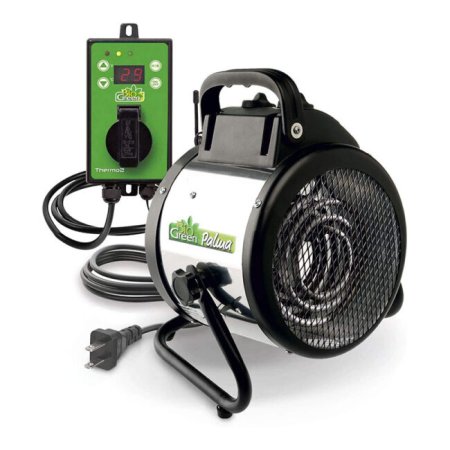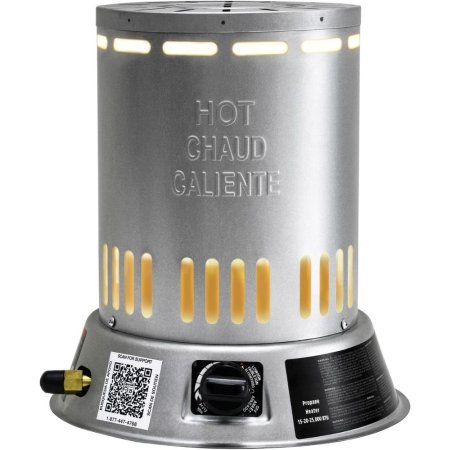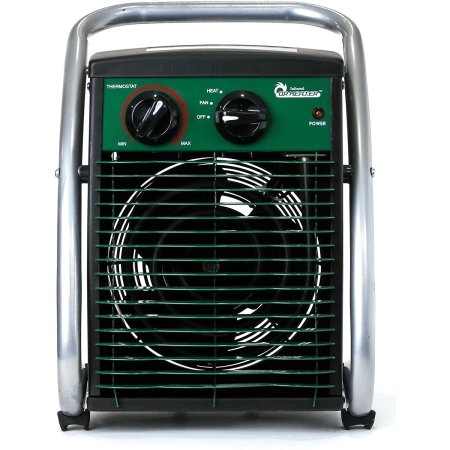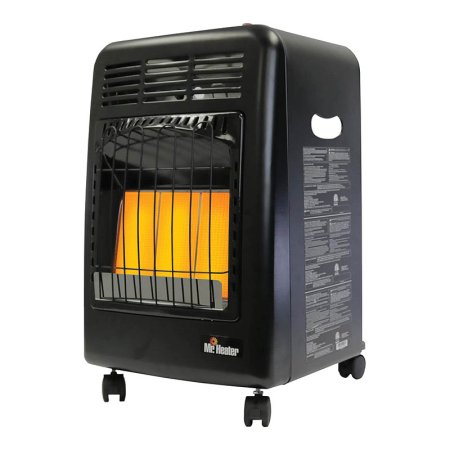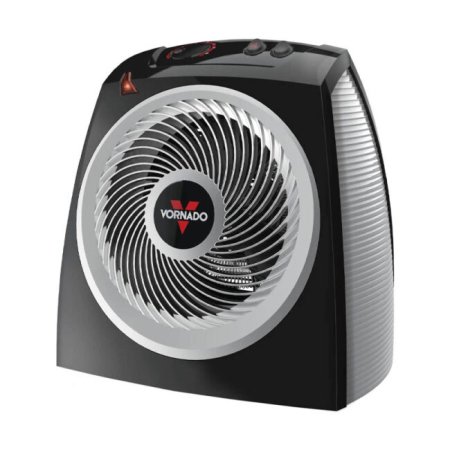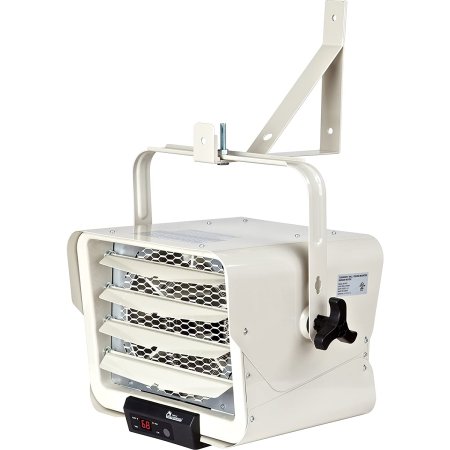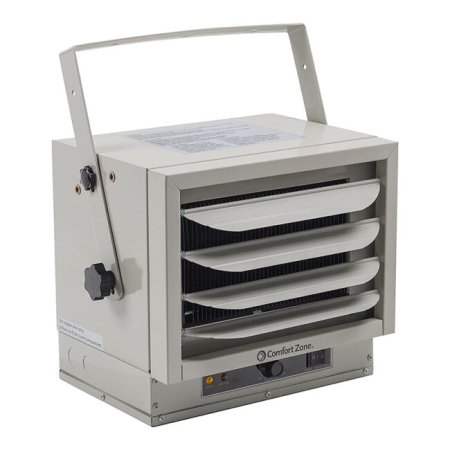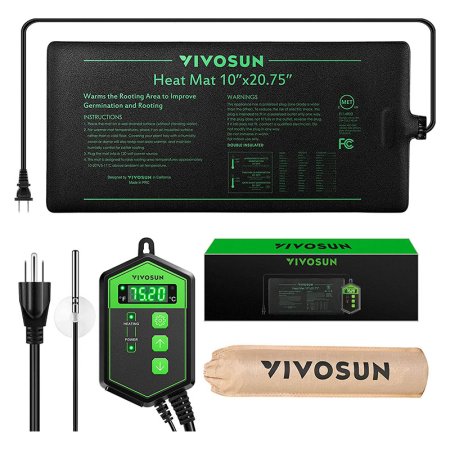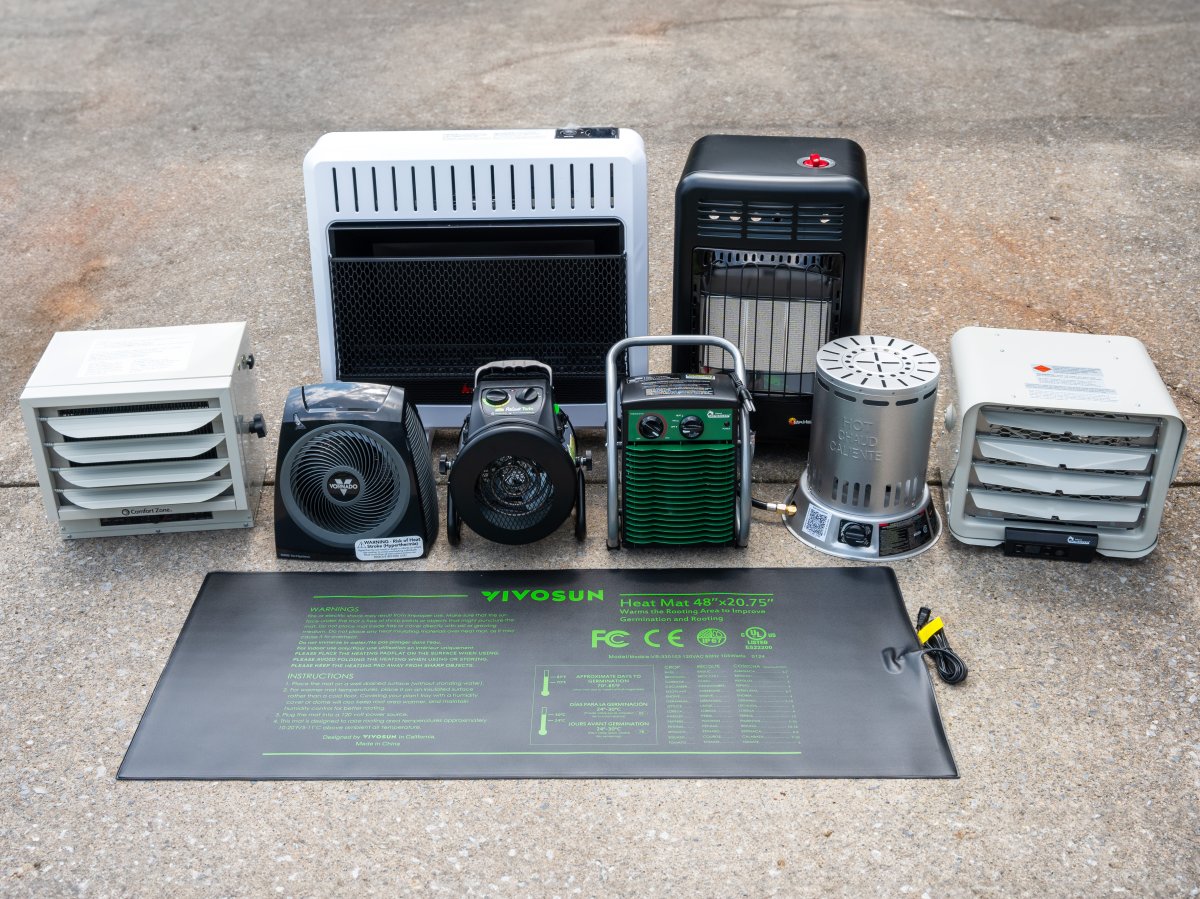
We may earn revenue from the products available on this page and participate in affiliate programs. Learn More ›
The most glaring difference between a greenhouse and a high tunnel or cold frame is the greenhouse heater. Where cold frames and high tunnels extend the gardening season and protect plants that are marginally hardy for the local climate, adding a heater can make it possible to keep tender plants alive in cold climates. If you’re considering how to heat a greenhouse, its design, size, and orientation, the local climate, and power source should be top of mind. Our favorite was the Bio Green Palma 110V Greenhouse Heater; we loved its digital thermostat, lightweight design, and auto-shutoff feature.
Heaters for greenhouses should make winter gardening easier without adding extra work and worry. They must operate safely in a damp environment, provide enough warmth for the coldest nights, and be able to run for an extended period of time when necessary. They should also have safety features to prevent overheating and fire hazards. Most backyard greenhouses are small, 120 square feet or less, so they don’t need complex heating systems. The best heaters for small greenhouses are small but powerful 1,500-watt electric units or portable propane heaters. The models featured here answer the call. Read on to find out they performed in testing and why we consider them to be the best greenhouse heaters for home gardeners.
- BEST OVERALL:Bio Green Palma 110V Greenhouse Heater
↓ Jump to Review - BEST BANG FOR THE BUCK: Dyna-Glo 25,000 BTU LP Convection Heater
↓ Jump to Review - BEST ELECTRIC: Dr. Infrared Heater DR-218 Greenhouse Workshop Heater
↓ Jump to Review - BEST GAS:Mr. Heater 18,000 BTU Propane Cabinet Heater
↓ Jump to Review - BEST FOR SMALL AREAS:Vornado Whole-Room Heater With Auto Climate
↓ Jump to Review - BEST FOR LARGE AREAS:Dr. Infrared Heater DR-975 7,500-Watt Electric Heater
↓ Jump to Review - BEST CEILING-MOUNTED:Comfort Zone Ceiling-Mounted 5,000-Watt Heater
↓ Jump to Review - BEST WALL-MOUNTED:HearthSense 30,000 BTU Vent-Free Gas Wall Heater
↓ Jump to Review - BEST SEED TRAY HEATER: Vivosun Seedling Heat Mat and Digital Thermostat
↓ Jump to Review
| Testing Stats | |
| Products tested | 9 |
| Time spent testing | 20 hours |
| Tests performed | 5 |
| Price range | $80 to $240 |
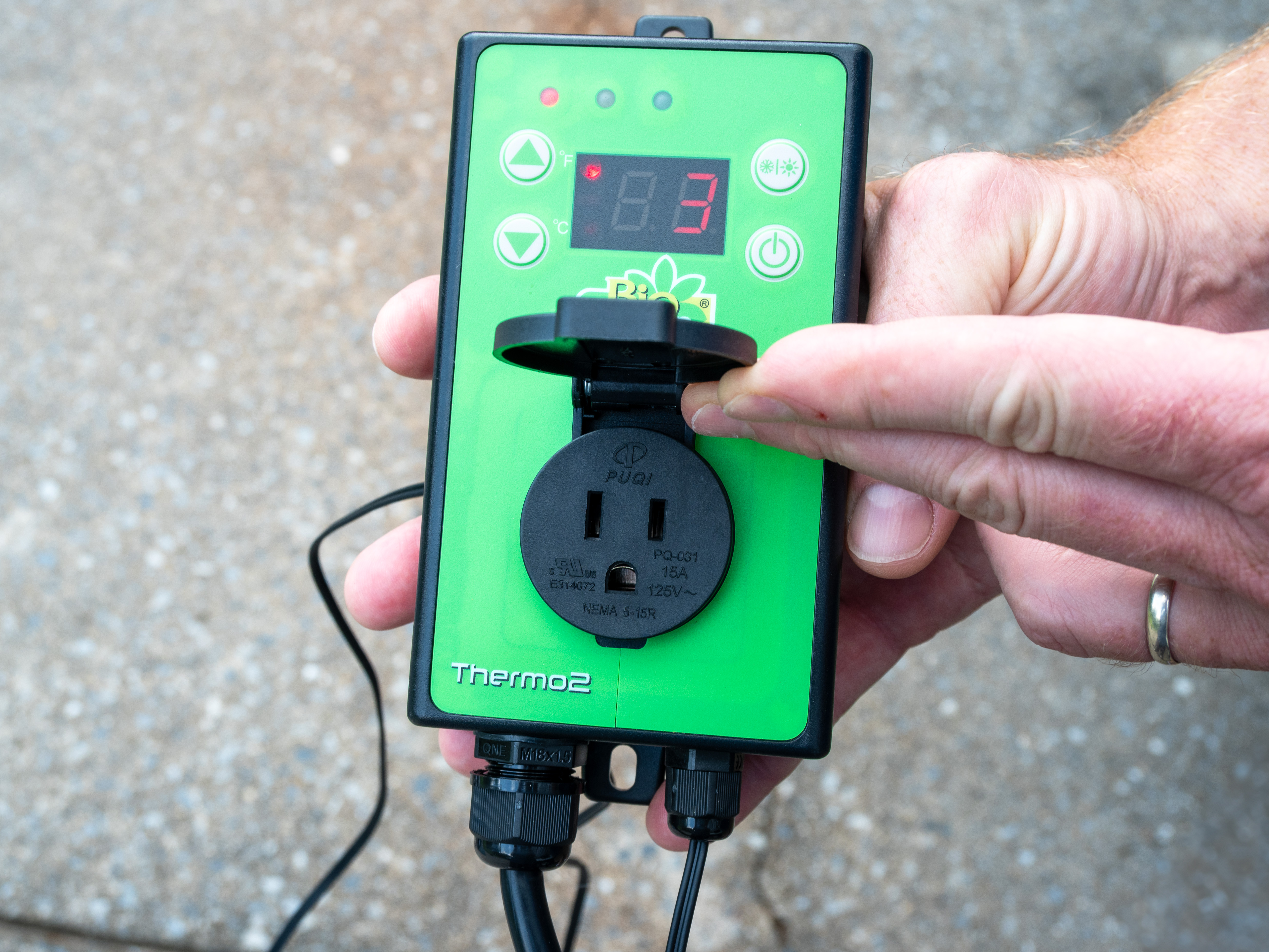
Our Top Picks
Your greenhouse plants need a durable and dependable heat source to make it through the cold season. Our testing indicated that these are some of the best greenhouse heaters for year-round gardening.
Best Overall
Bio Green Palma 110V Greenhouse Heater
Product Specs
- Type: Electric
- British thermal units (BTUs): 5,120
- Coverage area: 130 square feet
Our Ratings: Ease of Use 5/5;Effectiveness 4/5; Durability 5/5; Portability 5/5; Value 4.7/5
What We Like
- Easy to set up and use
- Robust digital thermostat
- Excellent air circulation
- Splash-proof
What We Don’t Like
- Relatively short 6-foot power cord
Designed specifically for greenhouses, the Bio Green Palma greenhouse fan heater is the best greenhouse heater with thermostat-controlled heating for a host of hobby gardeners. Stand-out features of this 1,500-watt electric heater include its digital thermostat, sturdy stainless steel build, and compact floor-standing design. This heater is intended for spaces up to 130 square feet, making it suitable for most home greenhouses.
This convenient heater comes with a digital thermostat that can be mounted at plant height for precise heat control. The thermostat displays ambient temperature and has a control range of 0 to 90 degrees Fahrenheit for multiseason use. To operate, we plugged the thermostat into a wall outlet and the heater power cord into the outlet on the thermostat. The heater switched on whenever the temperature dropped below the set point. This made it much easier to control the temperature based on the location of the plants.
A lightweight design and carry handle made the heater easily portable. For safety in a greenhouse setting, this model is IPX4 splash-proof and has an auto-shutoff feature in case of overheating. This model did a great job of heating our small greenhouse space and offered precision temperature control for sensitive plants.
Get the Bio Green greenhouse heater at Amazon, Wayfair, or Target.
Best Bang For The Buck
Dyna-Glo 25,000 BTU LP Convection Heater
Product Specs
- Type: Gas
- BTUs: 15,000 to 25,000
- Coverage area: 600 square feet
Our Ratings: Ease of Use 4.3/5;Effectiveness 5/5; Durability 5/5; Portability 5/5; Value 4.7/5
What We Like
- Safe for indoor or outdoor use
- 360-degree heating radius
- Does not need electricity or matches to operate
- Heats a large area
- Great for emergency backup
What We Don’t Like
- Requires frequent monitoring
- No thermostat to control the temperature
If an inexpensive, low-tech gas greenhouse heater is what you need, then the Dyna-Glo 15,000 to 25,000 BTU convection propane heater could be the answer. It is extremely lightweight, requires no electricity or flame to operate, and provides 17.5 to 29.75 hours of burn time per 20 pound propane tank.
The Dyna-Glo greenhouse propane heater was fairly easy to set up and operate, although it did require a bulky propane tank. We like that it is Canadian Standards Association (CSA)–certified safe for indoor or outdoor use and radiates 360-degrees of heat to a 13.82-foot radius. Although it lacked a thermostat to control the temperature, and did not have an integrated circulation fan, it heated our space quickly and thoroughly.
The only concern we had was that output is controlled by the gas valve, so it required more attention than other heaters. That said, it would make a good backup heater in the event of a power outage or for those in mild climates who only occasionally need a heater for greenhouse operations.
Get the Dyna-Glo greenhouse heater at The Home Depot, Walmart, or Global Industrial.
Best Electric
Dr. Infrared Heater DR-218 Greenhouse Workshop Heater
Product Specs
- Type: Electric
- BTUs: 5,200
- Coverage area: 150 square feet
Our Ratings: Ease of Use 4.3/5;Effectiveness 4/5; Durability 5/5; Portability 5/5; Value 4.7/5
What We Like
- Budget-friendly price
- Simple to use
- Built-in fan to circulate air
- Numerous safety features
What We Don’t Like
- Thermostat must be calibrated with a thermometer
The Dr. Infrared Heater DR-218 portable greenhouse heater offers electric heating for up to 150 square feet for an affordable price. This 1,500-watt electric heater is simple to use, with just enough output to help keep tender plants warm.
Choose either a heat or fan-only mode and turn the thermostat to choose the heat setting. The heating mode uses fan-forced air technology to encourage air circulation and eliminate cold air pockets. While the built-in thermostat dial doesn’t display the greenhouse’s ambient temperature, it can be set to maintain a set point temperature. For our test, we used a digital thermometer to calibrate the thermostat setting. Temperature sensitivity was pretty good, as it consistently kicked on within 5 degrees Fahrenheit of our set point.
Although cost-friendly, this unit doesn’t skimp on its safety features. The cool-touch housing prevents injury from accidental contact and it has an IPX4 splash-proof rating. It also features an automatic shutoff if the unit overheats.
Get the Dr. Infrared Heater DR-218 greenhouse heater at Amazon,The Home Depot, or Wayfair.
Best Gas
Mr. Heater 18,000 BTU Propane Cabinet Heater
Product Specs
- Type: Gas
- BTUs: 6,000 to 18,000
- Coverage area: 450 square feet
Our Ratings: Ease of Use 4.3/5;Effectiveness 5/5; Durability 5/5; Portability 5/5; Value 5/5
What We Like
- Cabinet-style heater with casters for easy transport
- Provides directed infrared heat
- Tip-over shutoff and automatic low-oxygen safety shutoff
- Requires no electricity
What We Don’t Like
- Does not have a fan to circulate heat
- Requires propane refills
A portable gas greenhouse heater delivers reliable warmth, even through a power outage. The Mr. Heater propane greenhouse heater offers between 24 and 72 hours of adjustable heating per 20 pound propane tank, with settings of 6,000; 12,000; and 18,000 BTUs. Its reflective radiant heat output is clean, quiet, and convenient for small to midsize greenhouses up to 450 square feet.
We really liked the space savings and easy portability of this cabinet style heater. The propane tank (not included with purchase) rests in a bracket inside the rear of the cabinet so that the heater and tank roll together as a single unit on four locking casters. With its easy-to-use piezo igniter, the heater requires no electricity. Once the pilot is lit, simply turn the dial to one of the three heat settings. On the downside, since it is not equipped with a thermostat, the greenhouse temperature must be monitored and the heat output manually controlled, which is not ideal when precision matters.
Get the Mr. Heater greenhouse heater at Amazon, Lowe’s, or Ace Hardware.
Best For Small Areas
Vornado Whole-Room Heater With Auto Climate
Product Specs
- Type: Electric
- BTUs: 5,118
- Coverage area: 250 square feet
Our Ratings: Ease of Use 4.3/5;Effectiveness 4/5; Durability 4/5; Portability 5/5; Value 4.7/5
What We Like
- Circulates air for even heating
- Robust safety features
- Timer feature
What We Don’t Like
- Not splash-proof
Our best heater for small greenhouses, the Vornado TAVH10 is a solid choice for compact greenhouses up to 250 square feet. Thanks to vortex air circulation and gentle heat, this light-duty small greenhouse heater ensures that warm air is properly spread throughout the room to keep a balanced temperature without cold or hot pockets.
Users can choose between a fan-only, low (750-watt), and high (1,500-watt) setting as well as set a timer or operate the heater via a remote control. The digital display allows users to set the temperature as well as view the ambient room temperature. This mini greenhouse heater stays cool to the touch and has a safety shutoff in case of excess heat or being knocked over. One weak point, however, is that this heater isn’t specifically designed for greenhouses, so it isn’t splash-proof.
We especially liked the Vornado’s compact build, directional heating, air circulation and remote control—all super helpful in a small greenhouse setting. It did a good job of maintaining consistent heat in our tests, and the remote control allowed us to comfortably manipulate the settings without bending, stooping, or squatting.
Get the Vornado greenhouse heater at Amazon, Lowe’s, or The Home Depot.
Best For Large Areas
Dr. Infrared Heater DR-975 7,500-Watt Electric Heater
Product Specs
- Type: Electric
- BTUs: 25,597
- Coverage area: N/A
Our Ratings: Ease of Use 4.7/5;Effectiveness 5/5; Durability 5/5; Portability 4/5; Value 5/5
What We Like
- Wall- or ceiling-mount
- Powerful operation
- Remote-controlled
What We Don’t Like
- Requires installation (hardwiring and mounting)
Large greenhouses have higher heating needs that only a hardwired heater can provide. The Dr. Infrared Heater DR-975 energy-efficient heater is up to the task. While the brand doesn’t share the exact coverage area for this unit, its impressive 25,597 BTU rating proves it’s a powerful choice. Like many heavy-duty industrial heaters, this model can be wall- or ceiling-mounted. To ensure proper coverage, it features a dynamic fan and adjustable louvers to maximize directional airflow in large spaces.
For more precise control, this 7,500-watt heater has a remote-controlled thermostat. Intended for garages, warehouses, and greenhouses, it has a temperature range from 50 to 90 degrees Fahrenheit. A low, high, and timer mode add even more flexibility, allowing gardeners to choose the heat intensity and select an automatic shutoff time.
Given that our test greenhouse was about 200 square feet, this unit exceeded our needs. It did a great job heating the cold space, spreading the heat around, and maintaining a consistent temperature. The heating element seemed to cycle on and off a bit more frequently than other heaters. We chalked that up to its mount location near an outside corner of the space, and better-than-average temperature sensitivity.
Get the Dr. Infrared Heater DR-975 greenhouse heater atAmazon or The Home Depot.
Best Ceiling-mounted
Comfort Zone Ceiling-Mounted 5,000-Watt Heater
Product Specs
- Type: Electric
- BTUs: 17,065
- Coverage area: N/A
Our Ratings: Ease of Use 5/5;Effectiveness 5/5; Durability 5/5; Portability 4/5; Value 4.7/5
What We Like
- Ceiling-mounted design
- Powerful heating
- Rugged construction
- Fan-forced heating
What We Don’t Like
- Lacks remote-controlled thermostat
- Requires installation (hardwiring and mounting)
For permanent greenhouse structures, a ceiling-mounted heater is an attractive choice. Mounted heaters keep the heater out of the way—clear of the plant-watering splash zone and eliminating any tripping hazard. Its heavy-duty build and space-saving design make the Comfort Zone 5,000-watt heater an appealing pick.
This commercial-grade heater is hardwired in, so it requires some installation, but this design means it doesn’t need to be plugged into an outlet. It’s intended for use in poorly insulated areas, offering powerful operation ideal for larger greenhouses. Although Comfort Zone does not list its coverage area, the heater has a high 17,065 BTU rating.
A fan-forced design, variable mounting angle, and adjustable louvers help to push heat to all corners of a room. This unit delivered plenty of warmth in testing, but we noted a couple of issues. First, in the ceiling-mounted configuration, the thermostat was in a heat pocket above the plants, so the plants were always 5 degrees Fahrenheit or more cooler than the heater. Also, the fan only runs while the heating elements are running, so a secondary fan would be helpful to reduce cool pockets.
Get the Comfort Zone greenhouse heater at Amazon.
Best Wall-mounted
HearthSense 30,000 BTU Vent-Free Gas Wall Heater
Product Specs
- Type: Dual fuel (propane or natural gas)
- BTUs: 30,000
- Coverage area: 1,000 square feet
Our Ratings: Ease of Use 4.3/5;Effectiveness 5/5; Durability 5/5; Portability 4/5; Value 4.7/5
What We Like
- Compatible with 100-pound or larger propane tank or natural gas
- Large area directional heating
- Heater works manually without electricity
- Vent-free gas heater is safe for indoor use
- Dual-fuel options: propane or natural gas
What We Don’t Like
- Thermostat and blower require electricity
When it comes to semipermanent or permanent greenhouse heaters, wall-mounted units output their heat more effectively and use their thermostats more efficiently than ceiling-mounted types. The Hearthsense vent-free gas wall heater runs on either propane or natural gas with adjustable heat output up to 30,000 BTUs—enough to keep midsize and large greenhouses toasty.
This blue flame gas heater features a thermostat-controlled electric blower to help circulate warm air, but it does not require electricity for the burner to operate safely during a power outage. The high-output burner requires a 100-pound tank or larger when powered by propane. Fuel supply lines are sold separately.
As with the hardwired electric heaters, this gas heater may require professional installation. In our setup, its heat production far surpassed the other greenhouse heaters, but it was also much bulkier and not really portable. The thermostat controlled the blower, not the burner, so it really didn’t control the overall air temperature as well as we would have liked. Our space became warmer than we wanted, so we had to turn off the burner a couple of times to cool it down during the test. In colder climates, that wouldn’t be such a bad thing.
Get the HearthSense greenhouse heater at Amazon or The Home Depot.
Best Seed Tray Heater
Vivosun Seedling Heat Mat and Digital Thermostat
Product Specs
- Type: Electric
- BTUs: Not provided
- Coverage area: 6.92 square feet
Our Ratings: Ease of Use 4.7/5;Effectiveness 4/5; Durability 4/5; Portability 5/5; Value 4.7/5
What We Like
- Provides bottom heat for seed trays or potted plants
- Raises soil temperature 10 to 20 degrees Fahrenheit
- Infrared heating with double insulation
- Digital thermostat controlled
- Waterproof and flame-retardant surface
What We Don’t Like
- Less effective in deep cold; will not prevent frosted foliage
During seed-starting season, or for a minimal boost of winter protection, heating the whole greenhouse may be unnecessary. Bottom heat directly beneath seedling trays or plant pots may be all that is required. The Vivosun seedling heat mat is designed to keep plant root zones 10 to 20 degrees Fahrenheit warmer than the ambient temperature, with much lower power consumption than a conventional greenhouse heater.
This seedling mat is constructed with double PVC insulation to safely provide even bottom heat to the root zone. It is both waterproof and flame-retardant. It also comes with a digital thermostat that allows you to provide the exact temperature required for germination. The mat measures 48 inches long by 20.75 inches wide.
Although the Vivosun seedling mat did almost nothing to boost the air temperature inside our small greenhouse, it worked perfectly for boosting soil temperature. Laying flat on the greenhouse bench, it was especially effective for 1020 seed trays (up to four placed side by side), and seedling pots up to about 6-inches. Soil temperatures remained within 3 degrees Fahrenheit of the set temperature throughout our test.
Get the Vivosun greenhouse heater at Amazon, The Home Depot, or Vivosun.
Jump to Our Top Picks
How We Tested the Best Greenhouse Heaters
A rather complex formula can help you accurately select the right size heater for a greenhouse with regard to heat output. But choosing the best available option for a specific application requires more subjective criteria. Weight and dimensions, power source, portability, control and safety features, price, and durability weigh differently for different shoppers. For that reason, we selected an assortment of greenhouse heater sizes and styles. To test them, we set up each one in our greenhouse, recorded the time it took to raise the temperature 30 degrees Fahrenheit, and monitored its ability to hold that temperature for 3 hours. In addition to rapid heating ability, we observed the sensitivity of the thermostat; the heater’s ability to evenly heat the structure; and how easy it was to set up, operate, transport, and store the unit. Then we compiled our notes on a scoring rubric before awarding titles for the guide.
What to Consider When Choosing a Greenhouse Heater
In many climates, a greenhouse heater is necessary for cultivating plants year-round. The best heater for greenhouse settings helps to create a controlled environment for plant and vegetable growth. Besides the greenhouse heater type, there are a few important factors to look for when choosing the best greenhouse heater for your garden, including the model’s heating capacity, temperature controls, and safety features.
Types of Greenhouse Heaters
Heating can add significantly to greenhouse costs, so it’s important to choose wisely. In some areas, the sun alone can adequately heat a greenhouse, but colder areas may call for additional artificial heat to support plant growth. Greenhouse heaters do so using a few different methods depending on the type of device. Broadly speaking, most greenhouse heaters can be categorized into the following types: electric, gas, solar, and paraffin.
Electric
Electric heaters are efficient, easy to set up, and simple to maintain. Getting started with many electric heaters is as straightforward as plugging them into an outlet and switching them on. Since these heaters are also affordable, safe, and portable, they’re amongst the most popular options for many hobby gardeners. They can also come with additional features like built-in thermostats and timers. Electric heaters don’t emit any harmful fumes, so they can be used in greenhouses with minimal venting
One downside of electric heaters is that they require plugging into an outlet, which means the electrical system needs to reach the greenhouse. Water and humidity can also negatively affect electric heaters, so make sure the heater is suitable for using in greenhouse conditions. Many electric greenhouse heaters are splash-resistant to prevent water damage and electrocution.
Gas
Like gas patio heaters and other outdoor heaters, gas greenhouse heaters use natural gas or propane to create warmth, with propane being far more popular. While natural gas is less expensive than propane, fewer homes have the necessary natural gas pipeline running to the greenhouse, which is the main reason propane is more commonly used.
Propane gas heaters are hooked up to a propane tank, making them a great choice for greenhouses that lack an electricity source or a natural gas line. However, gardeners must replace the propane tanks frequently to maintain heat.
Regardless of the gas type, it’s crucial to ensure adequate venting so that the gas burns properly and doesn’t build up inside the greenhouse, which can be dangerous.
Solar
Those desiring a sustainable heating method that’s even easier to maintain than gas- or electric-powered units can consider installing a solar heating system. By pairing a solar panel kit with a heater, users can create a self-sufficient solar heater for greenhouse use that draws energy from the sun (much like the greenhouse itself). Solar systems don’t require connection to the electric system, natural gas line, or a gas source.
While there aren’t stand-alone solar greenhouse heaters on the market yet, this exciting new technology is worth considering for sustainability focused gardeners. Installing a solar system takes more work than just plugging in an electric heater, but a starter solar kit can provide the panels and wiring to get started. Just make sure to add a battery so the charge can be stored, allowing the system to operate when the sun isn’t out—the times when heating is most needed.
Paraffin
Paraffin greenhouse heaters are an old-school option for maintaining warmth. These basic heaters have a wick that, once lit, draws a liquid fuel from the holding tank beneath. Used by gardeners for many decades, these devices provide a low-cost and stable heat source that doesn’t require electricity or a gas line or tank.
However, since they must have a lit flame, they present a fire risk. Many of these heaters have a safety feature that extinguishes the flame if they are tipped over, but as is the case with any flame, they can still pose a hazard. Like gas heaters, paraffin heaters also release air pollutants, so they need adequate ventilation to be used safely. They’ll also need frequent monitoring to ensure the fuel source doesn’t run out. While paraffin heaters are still used by some gardeners, we have not included any in our lineup since safer and more user-friendly options are widely available.
Heating Capacity
When choosing a greenhouse heater, it’s important to consider the ideal greenhouse temperature. The plant types inside will determine the best temperature; winter crops will thrive in a different climate compared to tropical plants, for example. Before choosing how powerful of a heater is needed, consider a few factors: the goal temperature, the local climate, and the size and construction of the greenhouse. If you assembled the greenhouse yourself from a greenhouse kit, be sure to consult the manufacturer’s recommendations.
One common specification seen on greenhouse heaters is a BTU rating. One BTU refers to how much heat is needed to raise the temperature of a pound of water by one degree Fahrenheit. BTU is essentially a measure of energy output, so the BTU rating indicates how powerful the heater is.
When it comes to heating appliances, the BTU rating is measured in BTUs per hour. The higher the BTU rating, the more powerful the device. The best heaters for small greenhouses deliver at least 5,000 BTUs, which is often just enough to keep the inside temperature above 40 degrees Fahrenheit during freezing weather. BTU calculators can be used to help determine how many BTUs are needed to heat up a greenhouse (and good ones will consider the climate, intended temperature, and greenhouse materials). Some greenhouse heater manufacturers advertise the recommended coverage area of their heaters to give gardeners a more general sense of coverage.
Temperature Control
The simplest of greenhouse heaters are turned on and off manually, which means users must frequently check the greenhouse temperature to prevent under- or overheating. More advanced heaters have built-in temperature controls with a thermostat that monitors the temperature and switches the heater on and off as needed.
Choosing a heater with or without temperature controls depends on personal preference. Some gardeners choose to go without if they can check the greenhouse frequently, if the heater is only used rarely, or if they are confident they can choose the right heater power for their greenhouse. However, a heater with built-in temperature controls is very convenient and offers great peace of mind, not to mention that a thermostat can also help conserve energy since it will only switch on the heater when necessary.
When heat isn’t properly circulated, this lowers heating efficiency and can even damage plants if certain areas get too warm. Greenhouse heaters with fans can help circulate the air around the room and prevent hot pockets of air.
Safety Features
Many greenhouse heaters include safety features to help prevent any mishaps. One feature to consider is an auto shutoff, which will turn off the heater if it gets too hot or accidentally tips over. This feature helps keep heaters from becoming a fire hazard.
Electric greenhouse heaters should ideally be water-resistant to lower the chance of damage or electrocution. Check for an IPX4 splash-proof rating.
Automatic timers are a convenient feature, but they can also add to safety by giving gardeners the option to switch off the heater before risking the greenhouse overheating.
Some gas heaters include an oxygen depletion sensor that shuts off the heater when it senses the oxygen in the room is low. This possibly lifesaving safety feature ensures the heater shuts off before the oxygen is depleted in the room.
Tips for Keeping a Greenhouse Warm
Using a greenhouse heater isn’t the only way to keep a greenhouse warm. Thoughtful gardeners can conserve heat naturally with the practices described below, and even in cold climates where a heater is necessary, these tips can lower the amount of additional heat needed.
Insulation can do a great deal in helping a greenhouse trap heat. Some air circulation is necessary in a greenhouse, but make sure to seal unnecessary air leaks. One popular and inexpensive way to add extra insulation to a greenhouse is with Bubble Wrap. Installed across greenhouse walls and ceilings, its small air bubbles help keep heat in the building.
A heat-retaining thermal mass can also help the greenhouse maintain a higher temperature. Large barrels filled with water are a commonly used, cost-effective option. The sun heats the water throughout the day and some of that warmth is retained after the sun goes down. Heat sinks made of cinder blocks, stone, bricks, and cement are other options. A well-tended compost pile can also generate a good amount of heat, so consider moving the compost pile into the greenhouse through winter.
If these methods cannot create and maintain the desired temperature, a greenhouse heater is a reliable option for gardeners.
- Insulate the greenhouse by sealing air leaks and using Bubble Wrap to line the walls and ceiling.
- Add a thermal mass to retain heat from the sun.
- Utilize a greenhouse heater as needed.
FAQs
Still have questions about greenhouse heaters and which one might be right for you? Check out some of the most frequently asked questions and their answers below.
Greenhouse heating systems may be built-in or portable. For greenhouses attached to the home or within reach from home natural gas lines, connecting to the central heating system can be a suitable choice. For separate greenhouses, choose a portable electric, gas, solar, or paraffin heater.
The ideal temperature for your plant collection is the ideal for the greenhouse. Generally speaking, above 90 degrees Fahrenheit is too hot for a greenhouse.
The best way to boost efficiency is with good insulation. Consider adding an extra layer of greenhouse plastic to minimize drafts. Natural gas heating is often the most economical heating option, when available.
A ceramic heater can be used in a greenhouse, although it may not have sufficient heating power to maintain the temperature in a large greenhouse.
Meet the Tester
Mark Wolfe is a writer and product tester with a background in the nursery and landscaping industry. For more than 20 years he mowed, edged, planted, pruned, cultivated, irrigated, and renovated beautiful landscapes. Now he tests and writes reviews about the latest outdoor power equipment, hand tools, lawn care products, and other outdoor-living goods.
Additional research provided by Jasmine Harding.


